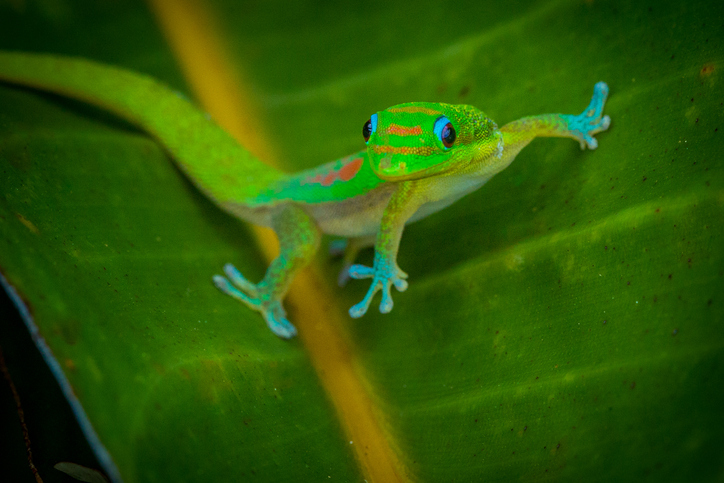
Chasing the Superpowers of Geckos
Geckos, the great defiers of gravity, continue to inspire scientists who are busy developing ground-breaking robots. A study by the University of Oxford focused on how these cute clowns are able to reach their terrestrial speeds while running across water.
Jasmine Nirody, a Post-Doctoral Research Fellow in Biophysics from the University of Oxford says, “While we know how geckos scale smooth vertical surfaces using countless tiny hairs on their feet called setae, how they manage to avoid sinking into the water has been something of a mystery – until now.”
A combination of strategy
Nirody shows in her research that geckos put several plans in operation, particularly buoyancy of water. According to the research, geckos create wavy kinesis with their tails, while they “slap” the water with their feet at the same. This movement pushes down the water and creates a pocket of air around it. They are able to rise above the surface with the help of this “bubble”. Another important factor that enables them to stay on the surface is their super-water-proof skin.
They are neither heavy nor light enough
Geckos are neither as light as water insects that can be held up by the water’s surface tension nor they possess pallet-like feet of some birds that can forcefully slap the water. They fall somewhere in between but they do slap the water with their feet, as it seems. Video analyses showed the combination of several techniques help them seize an advantage over the force between water molecules.
The secret lies in the tail
While geckos are able to keep their heads and bodies over the water with these techniques, their tails follow from under the water. This way, they create an extra propelling force by moving across the water with wave-like kinesis, much like an alligator does.
Researchers think that the successful amphibic performance of geckos will pave the way for robots as well.
REFERENCES
- 1. https://theconversation.com/geckos-walk-on-water-we-filmed-them-to-find-out-how-108266
- 2. https://www.cell.com/current-biology/fulltext/S0960-9822(18)31469-6
